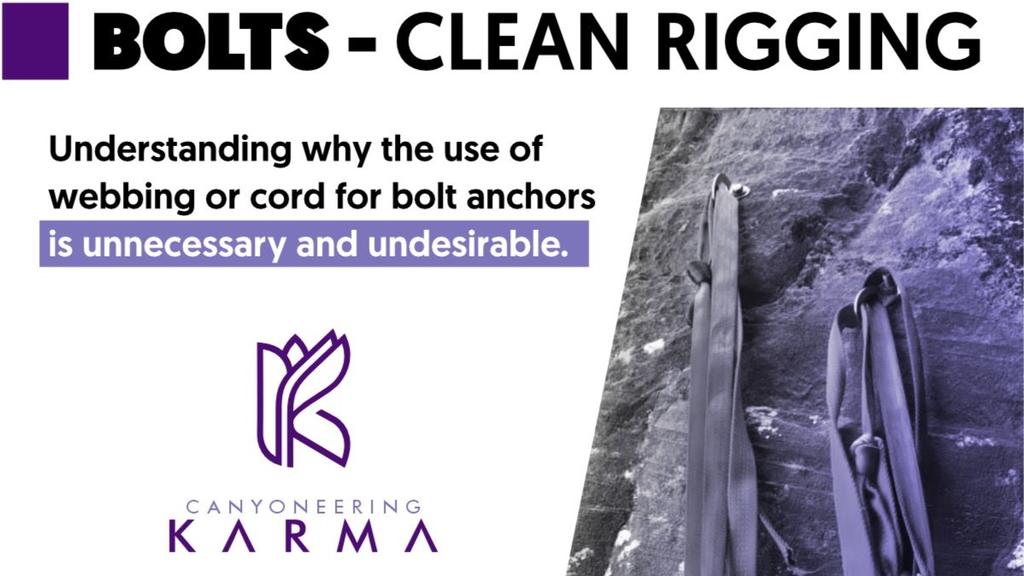In this episode Rich compares canyoneering to rock climbing, highlighting the differences in risks, challenges and skill requirements. Canyoneering involves additional risks such as hypothermia, hyperthermia, and flash floods, making it a sport that needs to be taken seriously. The challenges and skill sets required in canyoneering are different from rock climbing, with a greater emphasis on going down and less emphasis on individual physical abilities. There are also equipment differences, such as the use of static ropes and releasable rigging in canyoneering. The episode also discusses the debate around bolts as anchors in canyoneering and the constant innovation in the sport.
Key Takeaways
- Canyoneering involves additional risks compared to rock climbing, such as hypothermia, hyperthermia, and flash floods.
- The challenges and skill sets required in canyoneering are different from rock climbing, with a greater emphasis on going down and less emphasis on individual physical abilities.
- There are equipment differences between canyoneering and rock climbing, including the use of static ropes and releasable rigging in canyoneering.
- The debate around bolts as anchors exists in canyoneering, with some canyoneers preferring natural anchors and others recognizing the safety and efficiency of bolts.
- Canyoneering is a younger sport with constant innovation, but not all innovations necessarily improve safety, efficiency, or enjoyment.

Download your FREE copy of “Bolts – Clean Rigging” to learn best practices for rigging both mechanical and glue-in bolts.
We would love to hear your feedback ...
- What part of this episode was the most meaningful for you?
- Was there anything confusing about it, or where did you need more information?
- Do you have questions about the episode?
- Do you have a topic suggestion for a future episode?



3 Comments
Good summary of the difference between rock climbing and canyoneering! As Rich mentions, rigging releasable is a technique that many canyoneers use that rock climbers rarely do. This isn’t just for canyons with water, but in case someone gets stuck. (Like with clothing or hair getting jammed in the rappel device.) At first, I thought canyoneers were kind overly obsessed with this since I rarely had this happen in a rock climbing environment. (I rock climbed and thought rock climbing for over 30 years.) Prevention is best, but it turns out this happens quite a lot in canyoneering perhaps because of the shear amount of rappels involved with this sport. Perhaps too, with people taking out their beginner friends. Also, rappels in canyons can have awkward sections and/or confined spaces. That said, rappelling double stranded with an ATC style device isn’t necessary a bad thing, but one should have a plan (such as having an extra rope) if someone does get stuck or needs help. I think it’s also worth mentioning that a double rope system can make for a cleaner pull as releasable blocks can get stuck in some situations. (I think some canyoneers can get rather dogmatic. “I would never rappel double strained.”) I think another thing that many new canyoneers don’t take into account is getting ropes stuck. What if the canyon you’re doing has 6 rappels and your rope gets stuck on rappel # 2 and there are no escape routes?! I like to bring enough rope for both the longest rappel and for the second longest rappel. (Which might include strong pull cords.) While a lot of rock climbing skills transfer over to canyoneering — they have mostly benefitted my canyoneering — there are hazards and techniques specific to this sport. Hopefully more people will do their homework and get the training especially if they are taking out their beginner friends.
Thank you for your comments, Tony. You make some valid points. It is true that rigging double strand can sometimes reduce the risk of getting rope stuck, I have sometimes experienced the opposite. When rappelling on double ropes, they necessarily follow the same path down the wall. If there is a crack, Murphy’s Law says the one that goes into the crack first will be the tail, so the pull tends to push that tail deeper into the crack. Plus, I have had ropes stuck simply because the pull side was pushing the tail against the rock. Sometimes you can actually reduce the chances of a stuck rope by rigging a block and tossing the bag down to your partners, asking them to insure the pull side is off to the side.
Moral from all this: IT DEPENDS
Yeah, good points. I have indeed gotten ropes stuck even when pulling double stranded a couple of times when the end coming down flopped over a chock stone. Luckily in both these cases I was able to climb up (a short distance) and un stick it. My (trad) climbing experience came into play here! I have also had the end of a rope do a half hitch around the rapide in the anchor. (We went back the next day to retrieve it from above.) In any case, it happens — bring extra ropes!!! Your idea of tossing down the rope bag and having someone hold the pull side off to the side is a good idea, but you could potentially do the same thing if rappelling double stranded once the last person is down. I also watch the rope going up like a hawk to ensure that there are no twist or knots sometimes running it through my hands. (BTW tube style rappel devices have the benefit of not twisting ropes — just sayin.)